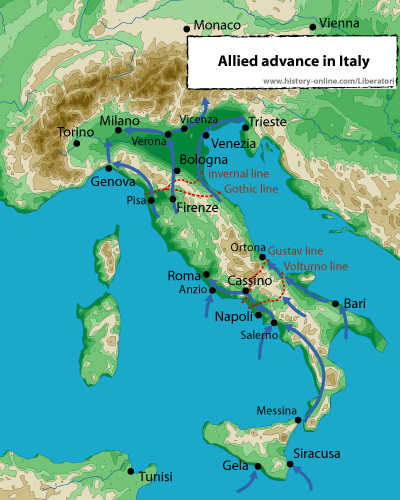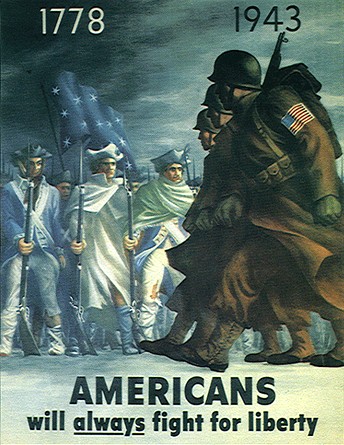Long Walk
from Sicily to the Alps
The Campaign of Italy began in 10 July 1943 with the “Husky” operation: the landing in Sicily. In one month, German and Italian forces were driven out from the island. The competition and the attrition among the American and British commanders started to be shown.
On 8 September 1943 Italy announced the armistice with the Allies and the Italian armed forces begun its dissolution. The German forces, prepared for the event, occupied the country by replacing Italian units in facing up the Allies. The Italian forces disappearance from the scene, was Churchill’s desired and attended moment; subsequently the facts will show that the campaign didn’t appear less harder for the missed opposition of Italian forces, rather, the German defence became perhaps more effective.
In 9 September 1943, American forces disembarked in the south of Naples, while British forces went up Calabria’s territory. In October, Naples main harbour was in the hand of the Allies and the front line was set along the river Volturno.

Allied advance in Italy
The formidable defence line Gustav and Gothic were ready with wide advance and great employment of German resources, the first one along the rivers Sangro, toward the Adriatic Sea and Garigliano, toward the Tyrrhenian, with the city of Cassino in the middle the second developed along the Apennine slope between Pisa and Pesaro. The Allies overcame such obstacles only after one year and a half.
The characteristics of the ground and the selected strategy to invade Italy made the task of the Allies particularly arduous.
Going up from the south of the peninsula in front of an endless following of hills and chains of mountains, tiny valleys crossed by rivers with rushing water streams. The communication routes were primitive, not able to suppor the movement of whole army corps.
The front line delimited by the Tyrrhenian and the Adriatic coast. Outflanking actions were therefore easily located and balanced. The Germans, dug in into carefully prepared defence lines and positioned on elevated zones, had the possibility to keep the Allies busy and to overlook their movements.
Allied activities rarely succeeded to surprise the enemy. Any lowland or valley was wide enough to allow the effective use of armoured and motorized columns, the rains made impracticable also the open ground and the most part of communications road, viable only with mules.

''Americans wiil always fight for liberty''
In any other front of the Second World War, the modern war drew so near to the torment of a war of position, with trenches, made of prolonged close confrontation, suffering of the harsh climate and of provisioning difficulties. The power and mobility of the Allied forces were completely annulled by the very characteristics of the theater of operations, rather than from the ability of German’s defence.
Besides, the forces placed on the field by the Allied were on average balanced by the German forces. All these elements offer a general picture of the difficulties and therefore of the formidable effort made by the Allies. With a totally unfavourable ground, completing the longest and tortuous way toward the objective and deprivation of numerical and technical advantages, the Allies succeeded in every way in freeing the peninsula.
In Italy, around 320 thousand Allied soldiers from different nations were sacrificed. The United States altogether lost around 114 thousand men of all the services in this campaign, lasted two years, completing a huge sacrifice to reach the victory on the nazism and the fascism and to guarantee to Italy a future of freedom.